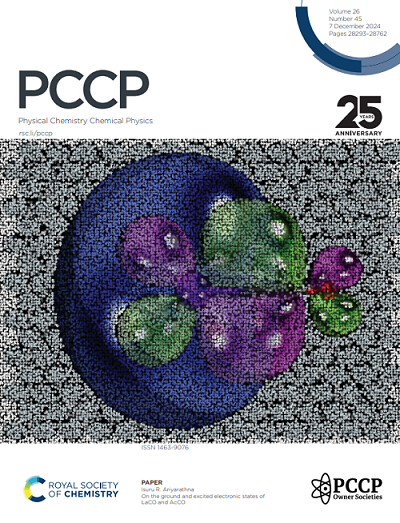First Principles Assessment of Solvent Induced Cage Effects on Intramolecular Hydrogen Transfer in the Free Radical Polymerization of Acrylates
IF 2.9
3区 化学
Q3 CHEMISTRY, PHYSICAL
引用次数: 0
Abstract
We investigate the rate constant of poly-butyl acrylate backbiting between 310 and 510 K using semi-empirical metadynamics in the gas phase, bulk and solution. The simulations in condensed phase are performed through a hybrid quantum mechanics/molecular mechanics approach. The free energy landscape associated to the reactive events in vacuum and in condesed phase are used to correct harmonic transition state theory (TST) rate constants. The Arrhenius parameters so determined are introduced in a semi-detailed mechanistic kinetic mechanism of butyl acrylate polymerization in bulk and in solution, allowing to test how butyl acrylate polymerization rate is affected by solvent-induced cage effects on backbiting. The results show that the backbiting rate constant is higher in the condensed phase than in the gas phase. In addition, a twofold increase is observed in xylene compared to bulk. These results differ significantly from previous theoretical calculations, especially at high temperatures, aligning better with experimental rate measurements. The semi-detailed model, incorporating our calculated rate coefficients, is validated against monomer concentration profiles from bulk and solution polymerizations in various reactor configurations, demonstrating good agreement with experimental data. This study paves the way for developing detailed kinetic models in the condensed phase using a priori kinetic parameters derived from molecular simulations, thus widening their range of applicability beyond the one experimentally accessible.求助全文
约1分钟内获得全文
求助全文
来源期刊

Physical Chemistry Chemical Physics
化学-物理:原子、分子和化学物理
CiteScore
5.50
自引率
9.10%
发文量
2675
审稿时长
2.0 months
期刊介绍:
Physical Chemistry Chemical Physics (PCCP) is an international journal co-owned by 19 physical chemistry and physics societies from around the world. This journal publishes original, cutting-edge research in physical chemistry, chemical physics and biophysical chemistry. To be suitable for publication in PCCP, articles must include significant innovation and/or insight into physical chemistry; this is the most important criterion that reviewers and Editors will judge against when evaluating submissions.
The journal has a broad scope and welcomes contributions spanning experiment, theory, computation and data science. Topical coverage includes spectroscopy, dynamics, kinetics, statistical mechanics, thermodynamics, electrochemistry, catalysis, surface science, quantum mechanics, quantum computing and machine learning. Interdisciplinary research areas such as polymers and soft matter, materials, nanoscience, energy, surfaces/interfaces, and biophysical chemistry are welcomed if they demonstrate significant innovation and/or insight into physical chemistry. Joined experimental/theoretical studies are particularly appreciated when complementary and based on up-to-date approaches.
 求助内容:
求助内容: 应助结果提醒方式:
应助结果提醒方式:


